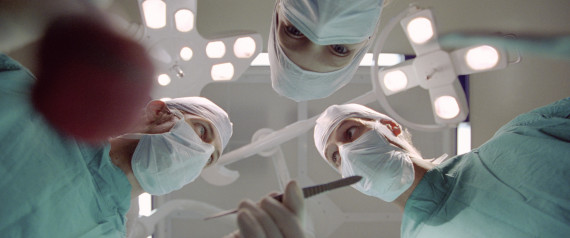The Whimsical Way Medical Students Learn About The Body
We already knew doctors have strong stomachs. We just didn't know how strong.
It turns out that medical education has a long and rich history of using food metaphors
to describe body parts, diseases, symptoms, and everything else that
students have to memorize. For instance, pus from a liver abscess looks a
lot like anchovy sauce, and a particularly aggressive form of lung
cancer is called "oat cell carcinoma" for its appearance under the
microscope.
Dr. Ritu Lakhtakia, M.D., Ph.D., head of the
Department of Pathology at the College of Medicine at Sultan Qaboos
University, compiled these medical-foodie terms in a recently published
article for the journal Medical Humanities
in an effort to preserve a dying tradition. Because she herself was
once a med student, toiling away to memorize facts and pictures,
Lakhtakia has fond memories about how culinary imagery made study time a
bit more fun.
"They make memorization of difficult facts child's
play," said Lakhtakia about food metaphors in an email to the Huffington
Post. "They also introduce medical graduates across the world to
cuisines they are unfamiliar with."
For instance, one of the tell-tale symptoms of von Recklinghausen’s disease are cafe au lait
marks on the skin. Certain fungal skin infections produce skin scrapes
that look like spaghetti and meatballs under a microscope.
Unfortunately,
said Lakhtakia, the tradition is dying away in favor of what she called
"more direct (and less picturesque)" language. The metaphors are also
becoming unnecessary because of technological advancement. Take, for
example, the task of estimating tumor size.
"Long before scale
measurements came into vogue, a three-dimensional estimate of the size
of tumors could be easily documented by being compared with peanuts or
walnuts (if larger, lemons or oranges come in handy for sizing!),"
Lakhtakia wrote in the article.
Lakhtakia is not sure why food
metaphors are so prevalent in medicine, but she guesses that the
universality of food gave teachers a common base with students from
which to explain difficult medical concepts. And of course, there is
another reason: doctors and researchers eat while working.
"A part
of this curious tradition may owe its origins to practising physicians
and researchers catching up on their meals in clinical side rooms or
operating theatre offices, or with an inevitably cold platter eaten with
eyes glued to a microscope," she wrote in her article. "It is a wonder
that, in the midst of the smells and sights of human affliction, a
physician has the stomach to think of food at all!"
A wonder indeed. In honor of this quirky, stomach-churning medical tradition, Huffington Post's own Alissa Scheller
whimsically illustrated just a few of the metaphors Lakhtakia included
in her articles. Be warned: links to the real thing are included in each
caption, so click or tap at your own peril!

"An apple shape versus a pear shape contrasts the habitus depending on the predominant fat distribution on the body." - Dr. Ritu Lakhtakia, Medical Humanities.

"The biconcavity of the red blood cell easily evokes craving for a doughnut." - Dr. Ritu Lakhtakia, Medical Humanities.

"Rather dramatic and visible reddish-purple birthmarks (vascular anomalies) on the skin are colloquially called port wine stain." - Dr. Ritu Lakhtakia, Medical Humanities.

"The delightful high that a bar of chocolate promises is negated by its likeness to chocolate cyst of the ovary, an endometriotic cyst containing dark-brown fluid from repeated cycles of endometrial proliferation and shedding with haemorrhage." - Dr. Ritu Lakhtakia, Medical Humanities.

"The pout displayed by the rheumatic mitral valve, with its narrowed opening, thickened lips and commissural fusion is mirrored in a fish mouth." - Dr. Ritu Lakhtakia, Medical Humanities.

"First-year medical students are inevitably taught that the kidney is bean shaped (lovers of red meat may conversely call the bean kidney-shaped)" - Dr. Ritu Lakhtakia, Medical Humanities.

Nenhum comentário:
Postar um comentário